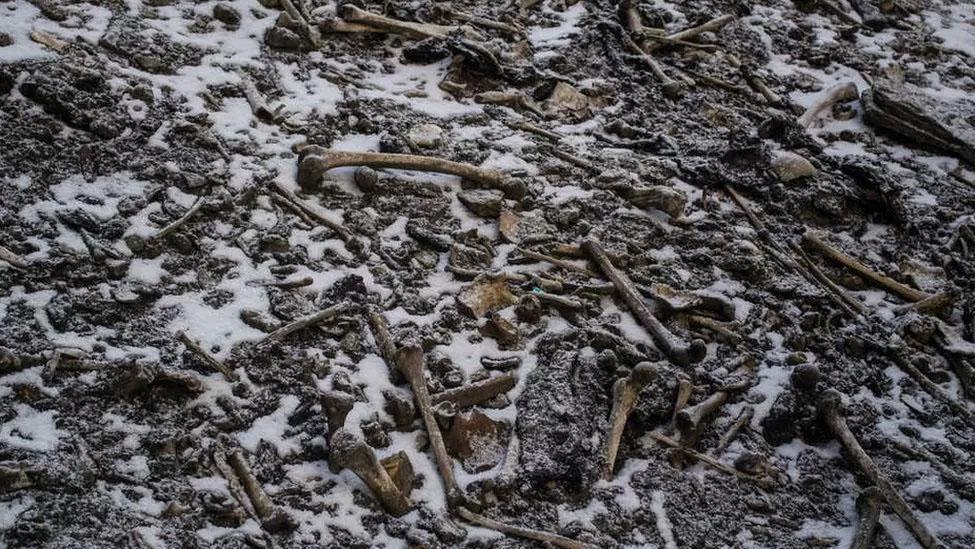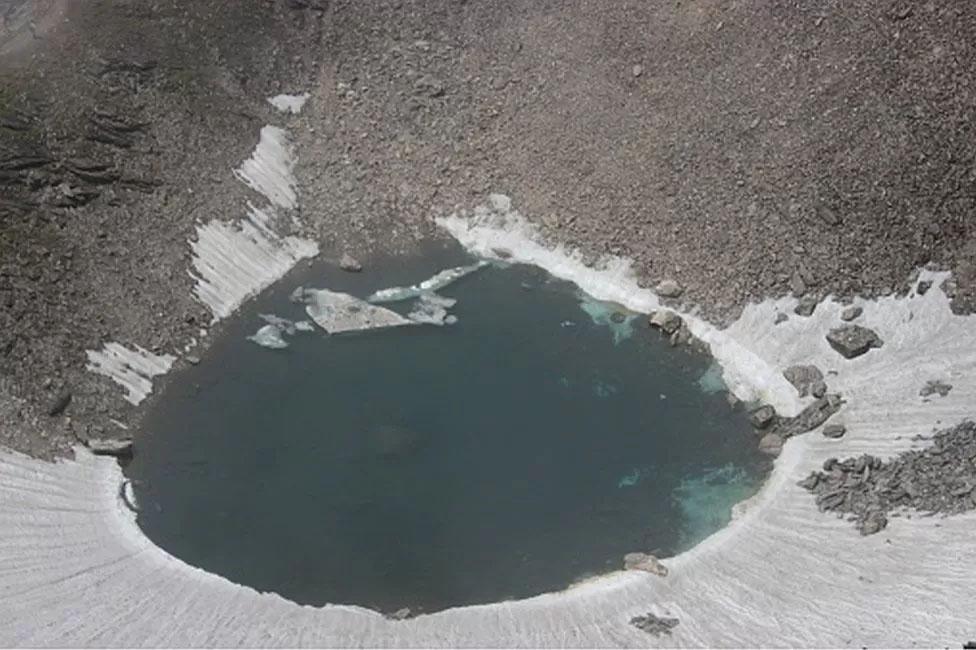In the snowy valleys of the Indian Himalayas, a secluded lake is the resting place of numerous human skeletons.
Roopkund Lake, dubbed the "lake of skeletons", is perched 5,029 meters above sea level on Trisul, a towering peak in Uttarakhand, India. First discovered in 1942 by a British forest ranger, the skeletal remains peek through the ice only when the snow thaws. At times, these remains are so well preserved that they even have flesh still attached. To date, between 600-800 skeletons have been uncovered, and the site is marketed by the local government as a "mystery lake".
For decades, scientists and anthropologists have delved into the mystery, raising questions about the identities and stories of these individuals. Old theories suggest they could be an Indian royal party caught in a blizzard over 800 years ago, or perhaps Indian soldiers defeated in an invasion of Tibet in the 1840s. Another hypothesis is that this was a burial ground for epidemic victims. Local folklore speaks of Goddess Nanda Devi's wrath, unleashing a lethal hailstorm on travelers by the lake.
Previous examinations indicated that these individuals were taller than average, primarily middle-aged, and seemingly in good health. Initial beliefs leaned towards the idea of a single disaster befalling a group in the 9th Century.
However, recent extensive research contradicts these beliefs. After a thorough five-year study that involved genetic and carbon-dating analyses of 38 bodies, researchers deduced that these individuals hail from various periods, spanning up to a millennium. This revelation disrupts the idea of a single catastrophic event causing their demise. Shockingly, while some of the deceased share genetic similarities with modern South Asians, others are genetically linked to contemporary Europeans, particularly those from Crete. And even the South Asian group isn't homogenous, with genetic diversities suggesting different regional origins.
Considering no weapons, trade items, or traces of ancient pathogens were found, the reason for their presence and death remains a puzzle. Some theories suggest a pilgrimage, given its historical mentions in the vicinity, which might explain the presence of South Asians. But how Europeans reached this secluded Himalayan lake is confounding. Was it a group on a pilgrimage from Europe, or a population with ancient Mediterranean ties residing in the region?
Eadaoin Harney, the study's lead author from Harvard University, admits, "We are still searching for answers."




